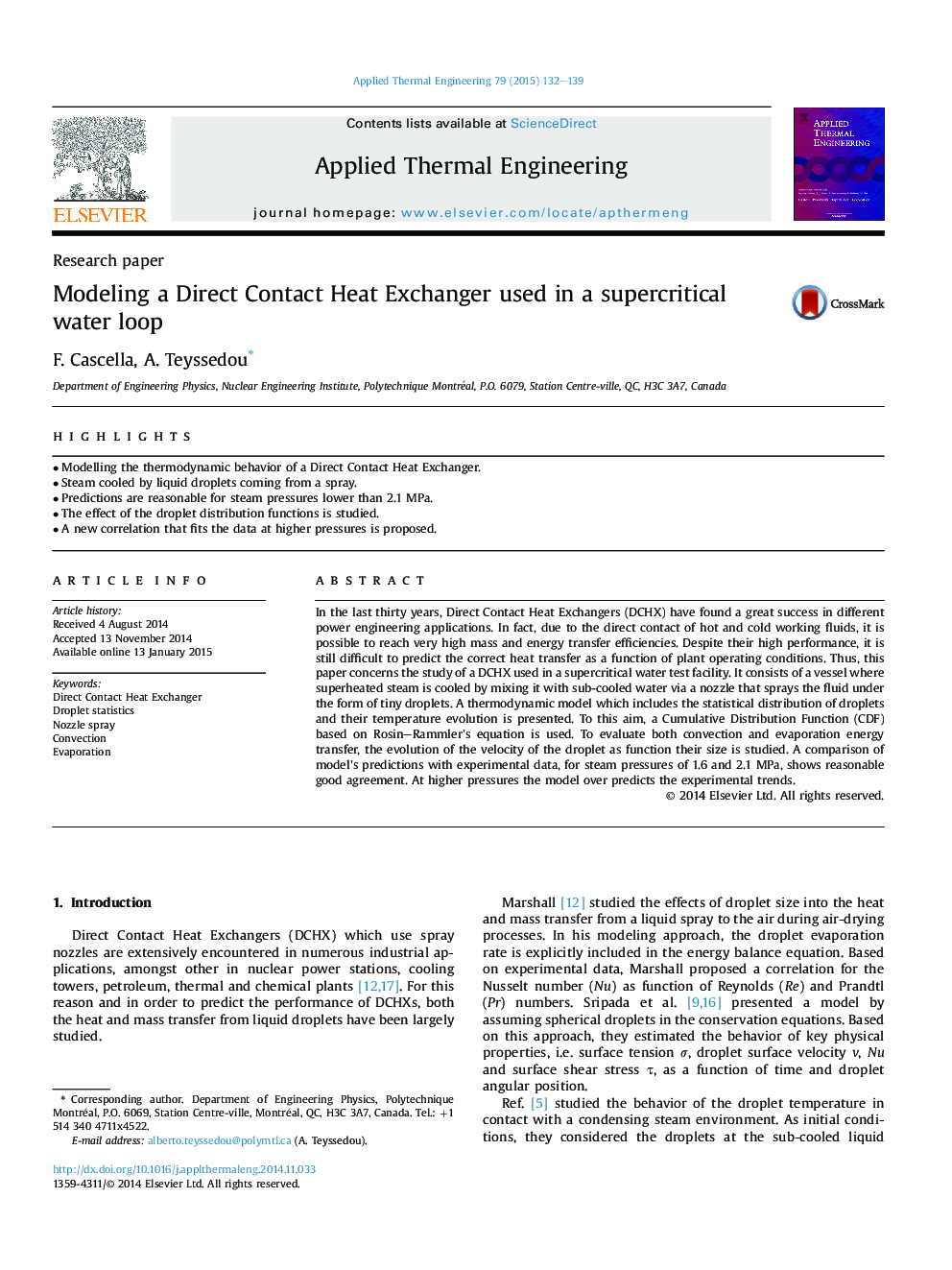| Article ID | Journal | Published Year | Pages | File Type |
|---|---|---|---|---|
| 645839 | Applied Thermal Engineering | 2015 | 8 Pages |
•Modelling the thermodynamic behavior of a Direct Contact Heat Exchanger.•Steam cooled by liquid droplets coming from a spray.•Predictions are reasonable for steam pressures lower than 2.1 MPa.•The effect of the droplet distribution functions is studied.•A new correlation that fits the data at higher pressures is proposed.
In the last thirty years, Direct Contact Heat Exchangers (DCHX) have found a great success in different power engineering applications. In fact, due to the direct contact of hot and cold working fluids, it is possible to reach very high mass and energy transfer efficiencies. Despite their high performance, it is still difficult to predict the correct heat transfer as a function of plant operating conditions. Thus, this paper concerns the study of a DCHX used in a supercritical water test facility. It consists of a vessel where superheated steam is cooled by mixing it with sub-cooled water via a nozzle that sprays the fluid under the form of tiny droplets. A thermodynamic model which includes the statistical distribution of droplets and their temperature evolution is presented. To this aim, a Cumulative Distribution Function (CDF) based on Rosin–Rammler's equation is used. To evaluate both convection and evaporation energy transfer, the evolution of the velocity of the droplet as function their size is studied. A comparison of model's predictions with experimental data, for steam pressures of 1.6 and 2.1 MPa, shows reasonable good agreement. At higher pressures the model over predicts the experimental trends.
